Mobility & Workouts
What is mobility?
Mobility is referencing the range of motion functionally available within a specific joint or motor pattern. Think of your joints as door hinges, the stiffer they get the harder it is to open the door. But if you put some WD-40 on those hinges, all of a sudden the door swings open more easily. Regularly including mobility work into your workout routine helps you to keep your “door hinges” nice and greasy! This grease is called synovial fluid. Our bodies naturally produce this fluid to help lubricate joint motion. However, as we age, we experience changes to synovial fluid production and cartilage integrity that can contribute to joint stiffness. At Symmetry we can help evaluate your mobility and set you up for success during your workouts. You can book a session with us here.
Why You Need to Make Time for Mobility Work in Your Workouts
It’s half past noon and you have exactly 60 minutes to get to the gym, workout, grab a smoothie, and get back to your desk. That’s barely enough time to get a solid sweat in, so you decide to simply “warmup” on the treadmill for five minutes and make time to stretch later in the week. That should be fine right? Well, the truth is skipping a quality warmup once won’t make or break your functional capacity. But this isn’t really about one warmup. It’s about habits. It’s about behavior. Our society is constantly pressed for time. So the chances are if you skip a proper warmup once, you’ll probably skip it over and over again.
Over time, this can contribute to stiffness, poor motor patterning, or even pain. A good warmup prepares you for your workout. And no good warmup is complete without some mobility work. So, with a little time management, you can get that midday energy boost you need while taking care of your joints so they can take of you, for years to come.
Why is mobility important?
Regular exercise helps us to maintain joint health. It increases circulation to our joints, promotes synovial fluid production, and releases anti-inflammatory compounds that help to reduce compromise to cartilage integrity. To get all these benefits, we need to make sure we are prepared for the movement we intend to do. This will result in better training outcomes and fewer aches and pains. As you integrate mobility into your weekly workouts, you will notice your available range of motion increasing over time. At this point, it’s important to add stability exercises to train the joint in its new range. This is called neuromuscular re-education. It is the key to maintaining your mobility gains.
Mobility: Getting Started
If you are unsure where to start, here are 3 “bang-for-your-buck” mobility moves and stability pairings to get you ready for any workout.
Anterior Hip Stretch with Trunk Sidebending
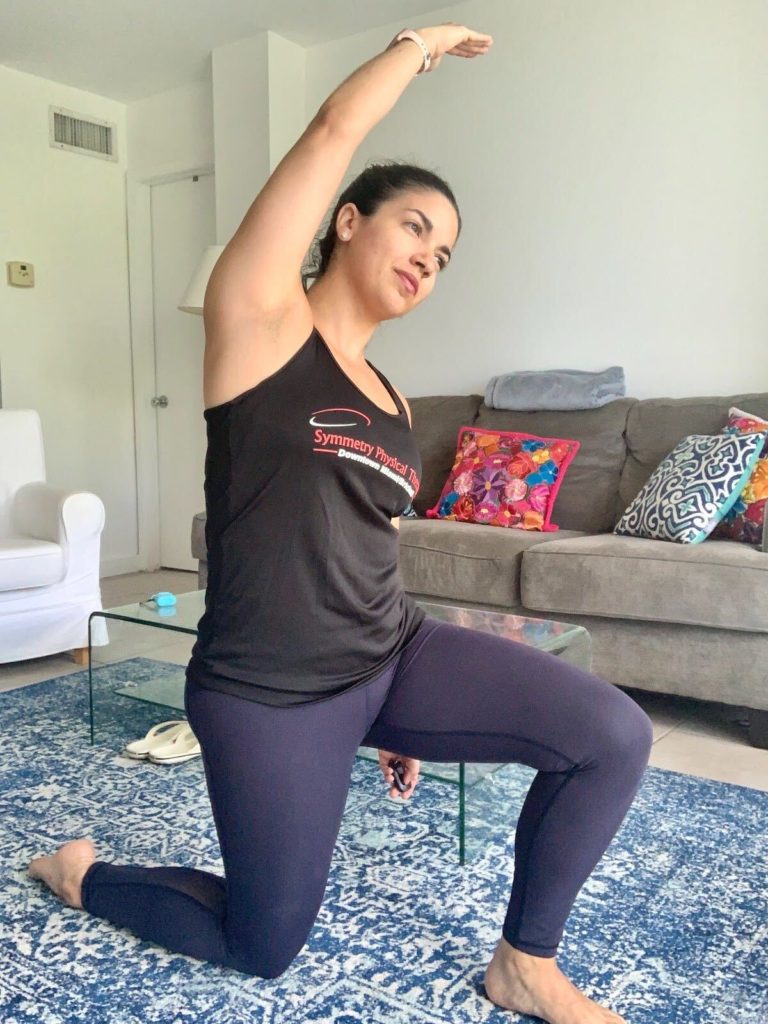
What it does: Aids hip extension mobility, hip flexor flexibility, and integrates trunk sidebending mobility.
- Start in a tall kneeling position with your right knee on the ground. If necessary, you can place a towel roll under your knee for cushion.
- Tuck your tailbone under, placing your pelvis in a posterior pelvic tilt. Maintain this pelvic tilt as you shift your bodyweight forward. This move challenges the extension range in your kneeling hip.
- Next, reach your right arm toward the sky. Be sure to keep your ribs down. You want to prevent your back from arching.
- Last step. Gently side-bend your trunk to the left as you reach your right arm up and over to the left. This move integrates flexibility of the hip flexors. Hold for 3-4 exhales. Switch sides.
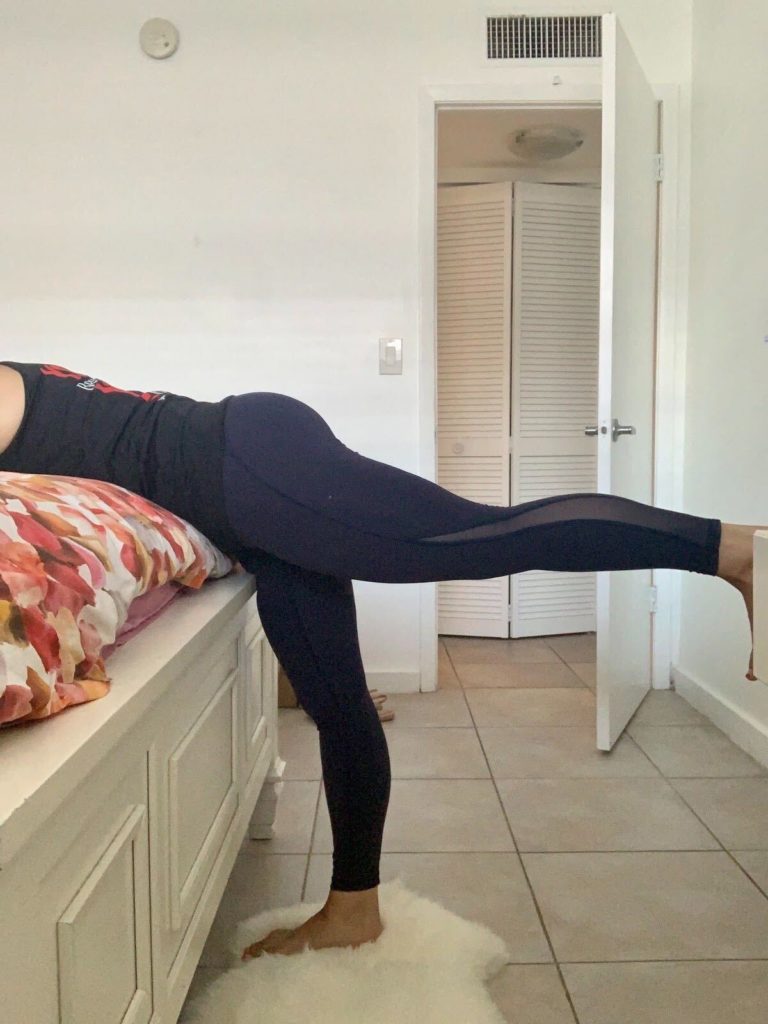
Stability Pairing: Semi Prone Lying Hip Extension
- Lie face down over your bed or kitchen table, resting your forehead on your hands.
- Without arching the back, lift your leg into max available hip extension. Hold for 2-3 exhales and lower. Repeat 3 more times, then switch sides.
- For an extra challenge, add an ankle weight. Make sure the external load does not compromise your ability to utilize your max available range.
Modified Spider Lunge Stretch with Trunk Rotation
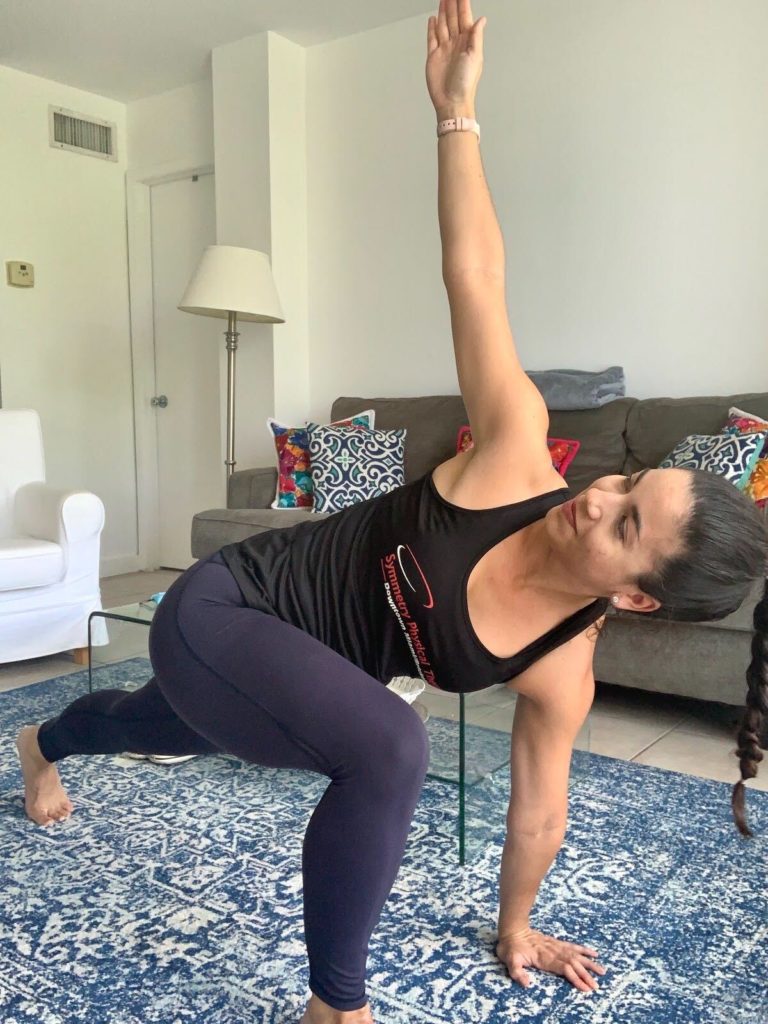
What it does: Aids hip flexion mobility, hip extensor flexibility, and integrates trunk rotation mobility.
- Begin in a tall plank position. Step your right foot to the outside of your right hand. Now, drop your left knee to the ground. This is the modified spider lunge position.
- Keep your left hand planted on the floor as you rotate your sternum (breast bone) toward the right, reaching your arm for the ceiling. Inhale.
- On your exhale, rotate toward your left arm and thread the right arm under. Repeat 3 more times and switch sides.
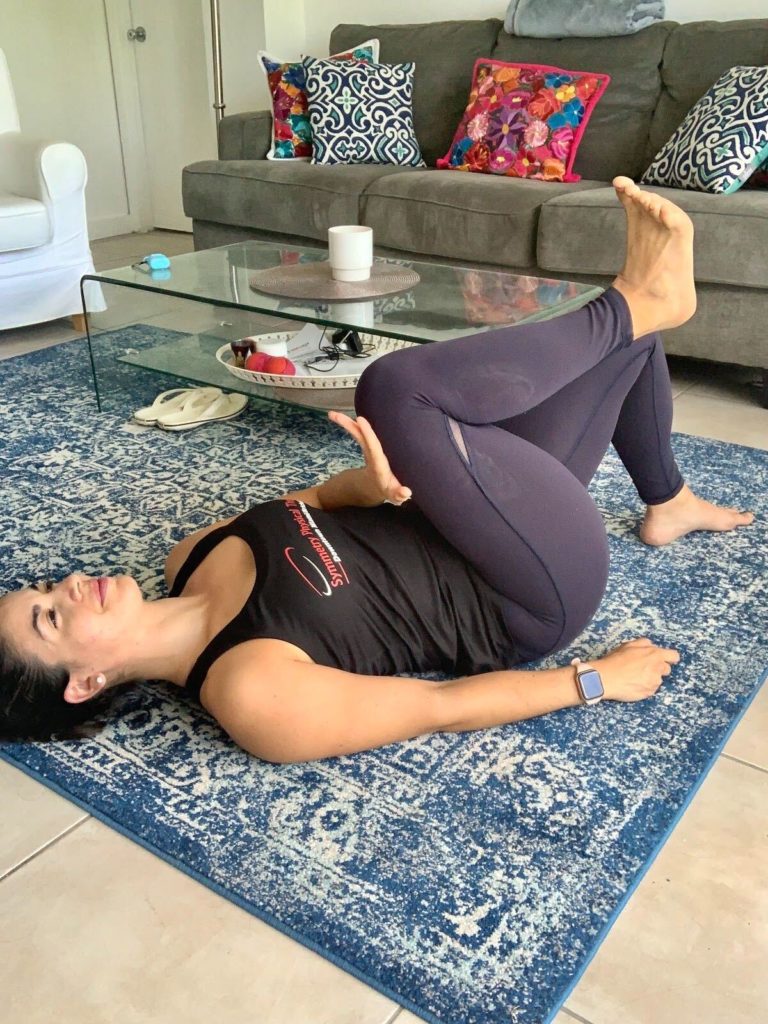
Stability Pairing: Supine Isometric Hip Flexion
- Lie on the ground in a hooklying position. Bring your right knee into max hip flexion using only your muscle strength. Hold this position without losing range for 3 breaths. Lower the leg and repeat 3 more times, then switch.
- For an extra challenge, gently press your hand against your thigh. Use only the minimum resistance needed to challenge the hip flexor while remaining in this end range.
Shoulder Dislocates
What it does: Aids shoulder girdle mobility and trunk stability.
- Begin in standing, holding a weightless pole with a wide overhand grip.
- In a slow and controlled manner, raise the bar up and over your body. If your shoulder mobility allows, try to get the bar to touch the back of your body. If you don’t have this range of motion yet, work within your available mobility. It will improve over time.
- Perform 10-20 reps. Stop when you begin to feel a general sense of fatigue.
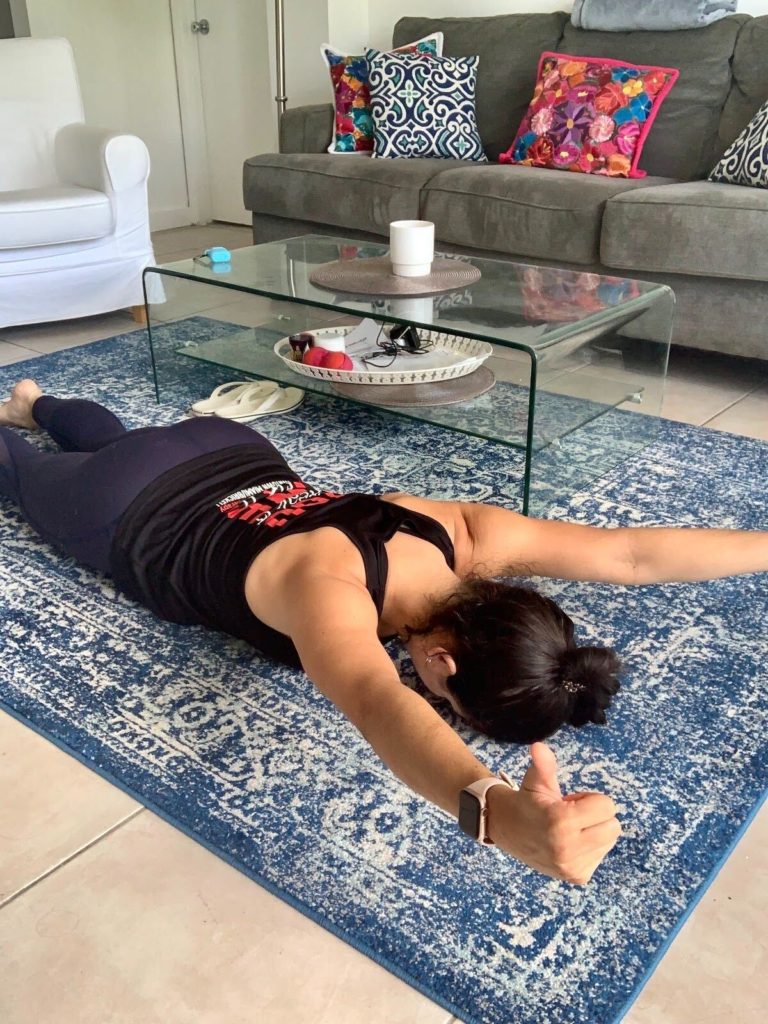
Stability Pairing: Prone Y Raises
- Lie on the ground face down with your arms outstretched in a Y position, thumbs up. Your head should be resting on the floor.
- Without shrugging, lift your arms off the ground. Hold for 2-3 breaths. Lower and repeat 3 more times.
Intense stretching and muscle contractility
While mobility work is extremely important and beneficial for exercisers of all levels, advanced athletes and heavy lifters should note that intense mobility work with prolonged holds and stretching is better left for the end of a workout. Intense stretching decreases muscle tissue contractility temporarily, which can be counterproductive before a heavy lifting session or intense HIIT program.
Do you plan on trying these moves before your next workout? Tell us how it went! DM us on Instagram @symmetryptmiami. Tag us in a video of you crushing some of these moves, and we’ll feature you in our stories.
For more tips on exercise selection and all things physical therapy, check out our other blog posts.
Written By: Dr. Nicole Ramos, PT, DPT
